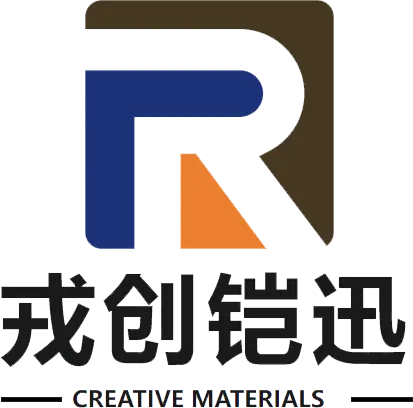Aluminium Oxynitride, often referred to as ALON, has garnered significant attention in various modern applications due to its unique properties that combine the strengths of both aluminium and ceramics. As an advanced transparent material, ALON exhibits exceptional hardness and mechanical strength, making it an ideal choice for use in armor, optical devices, and aerospace components. According to a recent industry report from MarketsandMarkets, the global market for advanced ceramics, including Aluminium Oxynitride, is expected to reach approximately $15 billion by 2025, reflecting a compound annual growth rate (CAGR) of around 6.5%. This surge is driven by the demand for durable, lightweight materials across diverse sectors, including defense and electronics. Understanding the technical specifications and applications of Aluminium Oxynitride is essential for industry professionals seeking to leverage its advantages in innovative projects and product developments.

Aluminium oxynitride (AlON) has emerged as a significant material in modern applications due to its unique blend of properties derived from both aluminium nitride (AlN) and aluminium oxide (Al₂O₃). Recent advancements, particularly those showcased at PSE '24, highlight the potential of AlON coatings in enhancing the performance of optical and protective surfaces. These coatings not only exhibit excellent transparency and strength but also offer remarkable thermal stability, making them suitable for demanding environments in various industries.
Research indicates that AlON films are characterized by their impressive hardness and resistance to abrasion, which rival that of traditional glass and ceramics. Reports indicate that the refractive index of AlON can be tailored to specific applications, providing versatility in the design of antireflective coatings. By utilizing controlled reactive sputtering techniques, these films can be engineered to optimize performance attributes, thus paving the way for innovations in sectors such as aerospace, defense, and electronics. This adaptability emphasizes aluminium oxynitride’s increasing significance in modern technological landscapes.
In recent years, aluminium oxynitride (AlON) has emerged as a crucial material in various high-tech applications, particularly in the defense, aerospace, and optical industries. Key Chinese manufacturers have significantly advanced their production techniques, which has empowered them to cater to the growing demand for this exceptional ceramic. For instance, a report from Research and Markets predicts that the global AlON market will reach approximately USD 557 million by 2025, growing at a CAGR of 6.1%. This surge is largely driven by innovations in manufacturing processes that enhance the material’s properties, such as thermal stability and optical transparency.
Leading Chinese factories have adopted advanced synthesis methods such as sol-gel and hot pressing to produce high-quality AlON. These techniques not only improve the uniformity and purity of the final product but also reduce waste significantly. According to a study from the Journal of the American Ceramic Society, hot-pressed AlON can achieve over 95% density while maintaining excellent mechanical strength. Furthermore, the strategic investments in state-of-the-art machinery and skilled labor have positioned these manufacturers at the forefront of the global AlON market, enabling them to meet specific client requirements and stringent quality standards.
Aluminium oxynitride, often dubbed as "transparent aluminum", is making waves in various modern technology applications due to its unique properties. This remarkable material combines aluminium, oxygen, and nitrogen to create a solid that is not only lightweight and strong but also transparent to certain wavelengths of light. Its use spans military armor, optical components, and even advanced electronics, opening up avenues for innovation that were previously unattainable.
When considering aluminium oxynitride for your project, keep in mind that its versatility is one of its strongest assets. For applications requiring high durability and transparency, it can serve as a robust alternative to traditional materials. Additionally, the ability to tailor its optical properties means that it can be engineered for specialized uses, such as in sensors or protective eyewear.
Tips for maximizing the effectiveness of aluminium oxynitride include ensuring proper integration with existing technologies and conducting thorough testing to assess performance under various conditions. It’s also beneficial to stay updated on the latest research and advancements in manufacturing techniques, as improvements in production methods can significantly impact the material’s application potential. Experimentation and collaboration with experts in the field can also yield innovative solutions that leverage its unique characteristics for groundbreaking technology developments.
Aluminium oxynitride, also known as ALON, is emerging as a game changer in various modern applications due to its unique properties that set it apart from traditional materials. With its exceptional hardness, transparency, and resistance to thermal and chemical damage, ALON provides advantages that conventional ceramics and glass simply cannot match. This makes it particularly valuable in fields such as defense, aerospace, and optics, where reliability and performance are critical.

In a comparative analysis of aluminium oxynitride against traditional materials, the former demonstrates superior performance metrics, including higher durability and lower weight, which can lead to more efficient designs. Moreover, the growing emphasis on sustainable materials has propelled interest in green aluminium production methods, aligning with the recent findings from market research, projecting the Global Green Aluminium Market to reach significant valuations. As industries increasingly prioritize eco-friendly solutions, ALON’s properties, coupled with advancements in green manufacturing, position it as a frontrunner for future applications.
Aluminium oxynitride (ALON) is gaining significant attention in various industries due to its unique properties, including high strength, optical transparency, and exceptional thermal stability. In recent years, the surge in demand for ALON has been notably influenced by Chinese manufacturing capabilities. According to a report by MarketsandMarkets, the ALON market is expected to grow from USD 167 million in 2021 to USD 260 million by 2026, with a substantial contribution from China, accounting for nearly 50% of the global production.

China's role in the aluminium oxynitride market highlights the country's substantial investments in advanced material technologies. A study by Allied Market Research noted that China's exports of ALON materials have increased by approximately 15% annually over the past five years, penetrating several international markets, including aerospace, defense, and electronics. This growth not only boosts China's economic standing but also impacts global supply chains, pushing other countries to enhance their material technology sectors to remain competitive. As industries increasingly integrate ALON into their applications, understanding China’s influence on this market becomes crucial for stakeholders worldwide.
